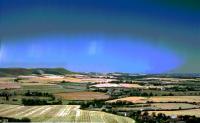| Introduction | Brighton | Contacts | Course Info | |||||
| Applications | Useful Info | Noticeboard | Related Links | |||||
History
There is much evidence of very early settlement in Sussex, especially on the chalk uplands where early peoples lived in preference to the forests. Iron ore deposits and plentiful timber allowed the development of a prehistoric iron industry. The modern history of the county begins with the occupation of Britain by the Romans, who set up a small kingdom, centred on Chichester, and appointed a local chieftain, Cogidubnus, to govern it. In the 5th century, the Saxons invaded the area, and established the kingdom of the South Saxons (from which the name "Sussex" derives), but by the 9th century the kingdom had become part of Mercia. From this time onwards the Danes made constant attempts at invasion, until Canute II, who became king of England in 1016, established peace.
In 1066, William I, Duke of Normandy, landed at Pevensey Bay, and marched inland to a hill north of Hastings, where he defeated Harold II, king of England, at the Battle of Hastings. After the Conquest, the Normans built a number of castles in Sussex, including those at Camber, Pevensey, Hastings, Lewes, Arundel, and Bramber. It was also at this time that the alliance of the Cinque Ports, grouped for the defence of the realm, began. Hastings was one of the original five ports, while Rye and Winchelsea were added later. In 1264, Simon de Montfort, leading a revolt against Henry III, defeated the king in the Battle of Lewes, and forced upon him reforms which included the constitutional foundations of the British Parliament. The 14th century brought difficult times, and in 1381 many Sussex people joined in the Peasants' Revolt, capturing Lewes Castle, and holding it for a brief period. Another revolt against authority in 1450 ended when its leader, Jack Cade, was arrested at Heathfield. During the Civil War, Sussex was divided in its sympathies, but the royalist strongholds at Chichester and Arundel were eventually overcome.
 |
Articles and photos are (c) Microsoft Encarta
Content by Ulf Dantanus - Designed by Noah Hearle - 5/19/01
